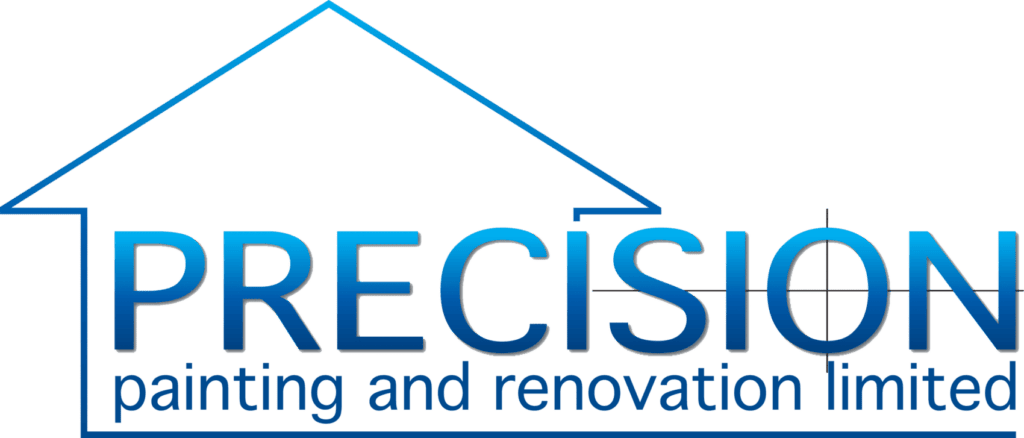When it comes to maintaining and enhancing the look of commercial buildings, painting is one of the most effective ways to achieve a fresh, polished appearance. A professional painting job can not only improve the aesthetic of a space but also provide added protection against wear and tear. Whether it’s for an office, warehouse, retail space, or any other type of commercial establishment, knowing which surfaces can be painted and the best methods for doing so is crucial. That’s where professional commercial painting services, like those offered by Precision Painting, can help.

Walls
One of the most common surfaces to paint in any commercial building is the walls. Walls provide a large canvas and can dramatically change the look and feel of a space. From traditional drywall to concrete or brick walls, there is a wide variety of paint types and finishes that work well. For instance, drywall and plaster walls may need a primer coat to ensure the paint adheres properly. Concrete and brick may require a special type of paint that can withstand moisture and prevent mildew growth.
For high-traffic areas or spaces exposed to constant wear, durable, washable paints like semi-gloss or satin finishes are ideal. These finishes allow for easy cleaning and maintain their appeal over time. In areas where aesthetics are important, matte or eggshell finishes might be the preferred option, giving a subtle, modern appearance.
Ceilings
Ceilings are another critical area that often goes overlooked in commercial buildings. While they may not be as noticeable as walls, a well-painted ceiling can enhance the overall atmosphere of a space. In commercial settings, ceilings are typically made from drywall, plaster, or tiles, all of which can be painted.
For smooth drywall ceilings, a flat finish is commonly used to avoid glare and imperfections. If the ceiling has a textured finish, such as popcorn or stipple, it’s crucial to use a paint specifically designed for that texture to ensure even coverage. In commercial environments where ceilings may accumulate dirt and stains more quickly, semi-gloss or satin finishes may be a better choice for easier maintenance.
Doors
The doors in a commercial space can often become scratched, scuffed, or worn over time. Painting doors not only refreshes their appearance but also helps to protect them from further damage. Commercial doors are typically made of wood, metal, or fiberglass, and each of these materials requires a specific type of paint for optimal results.
For wooden doors, it’s essential to sand and prime the surface before applying a coat of paint, as this helps to ensure better adhesion and a smooth, even finish. Metal doors require a paint that can handle rust prevention, and using oil-based paints or specialized metal paints is recommended. Fiberglass doors can be painted with most types of paint, but it’s important to clean the surface thoroughly to avoid peeling or chipping.
Windows and Frames
Windows and frames are another key area for painting in commercial buildings. Windows can be made of wood, metal, or vinyl, and each type of frame requires a different painting technique. Wood frames often need to be sanded and primed before painting to ensure the paint adheres well and provides long-lasting results.
For metal frames, it’s important to use rust-resistant paint, particularly in areas where exposure to moisture or salt is common. Vinyl windows may require special primers designed to bond with the plastic material, ensuring a lasting and smooth finish. In addition to painting the window frames themselves, the surrounding trim and molding can also be painted to complement the overall look of the space.
Floors
The flooring in commercial buildings is one of the most critical surfaces to consider when thinking about a paint job. Painted floors not only enhance the look of the space but can also offer protection and durability. In areas such as warehouses, retail stores, or industrial settings, floor paint can be used to create slip-resistant, easy-to-clean surfaces.
Concrete floors are commonly painted in commercial settings, often using epoxy paint or specialized floor coatings that can withstand heavy traffic and spills. For spaces that require a polished look, high-traffic areas such as lobbies or reception areas might benefit from polished concrete finishes or a high-gloss coating that enhances durability and cleanliness.
In areas where aesthetics matter, such as offices or showrooms, you might opt for decorative finishes or patterns, which can elevate the design of the space. Depending on the purpose of the building, floors may also require special coatings to address specific needs like anti-static properties or heat resistance.
Metal Surfaces
Commercial buildings often have metal surfaces in the form of railings, beams, pipes, and other structural elements. These metal components can be exposed to the elements, which can cause rust and corrosion over time. To protect these surfaces and extend their life, it’s essential to apply the right type of paint.
Metal surfaces are typically painted using oil-based paints or specialized metal coatings designed to prevent rust and offer long-lasting protection. Whether it’s a metal railing or steel beams, ensuring proper surface preparation, including cleaning and priming, is key to achieving the best results. In some cases, industrial-grade coatings such as urethane or epoxy might be used, particularly in areas with heavy use or exposure to harsh conditions.
Exterior Surfaces
The exterior of a commercial building is constantly exposed to weather elements, making it crucial to choose the right type of paint that will endure. Whether it’s a brick, stucco, or metal exterior, painting these surfaces can help improve the curb appeal of the building while also providing essential protection against the elements.
For masonry surfaces like brick or concrete, it’s important to use paints designed specifically for porous surfaces. These paints can help protect against moisture penetration, which can lead to mold or mildew buildup. Metal exteriors require a different type of paint, often designed to resist rust, especially in coastal areas or regions where salt exposure is high.
When painting the exterior of a commercial building, it’s essential to consider the climate and weather conditions in the area. For example, areas with high humidity may require mold-resistant coatings, while locations prone to high temperatures might benefit from heat-reflective paints to reduce the internal temperature of the building.
Special Surfaces
Commercial buildings may also have special surfaces that require specific attention when it comes to painting. These can include items such as acoustic tiles, exposed pipes, or even industrial equipment. Depending on the surface and its use, the paint must be chosen accordingly.
For example, exposed pipes in industrial settings often require heat-resistant or rust-inhibitive coatings. Similarly, acoustic tiles may need a specific type of paint that doesn’t interfere with sound absorption while still providing a protective finish. These types of surfaces can be tricky, so professional painting expertise is essential to ensure proper preparation, application, and durability.
Why Choose Precision Painting?
At Precision Painting, we understand the unique challenges of painting in commercial spaces. Our team specializes in providing high-quality, durable painting solutions for a wide range of surfaces. We ensure that every project is done with attention to detail, using the best materials and techniques for the job. Whether it’s a complete exterior overhaul or touching up interior surfaces, you can trust Precision Painting to deliver outstanding results. Let us help you transform your commercial space into a polished, professional environment that stands out for years to come.

